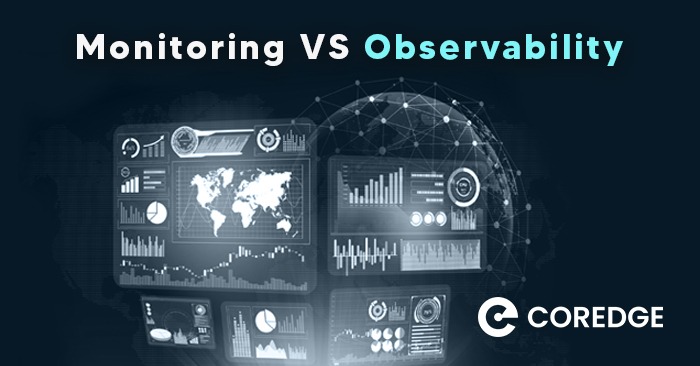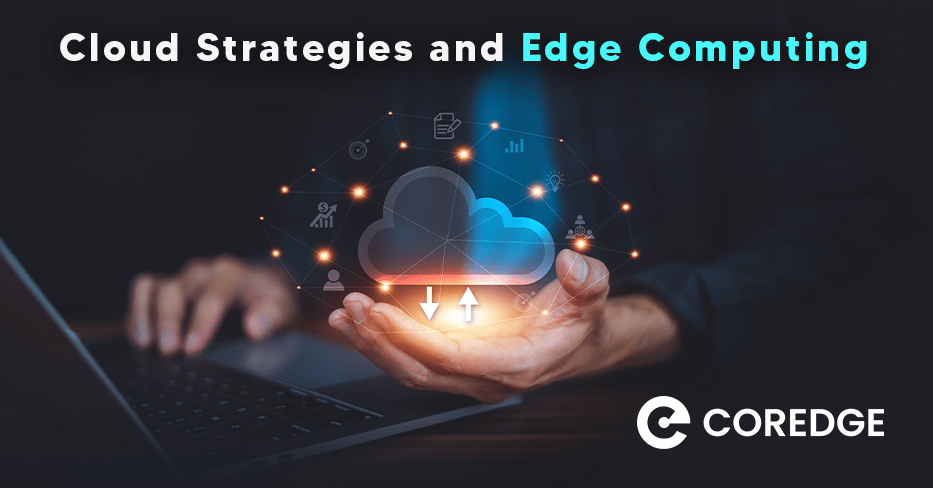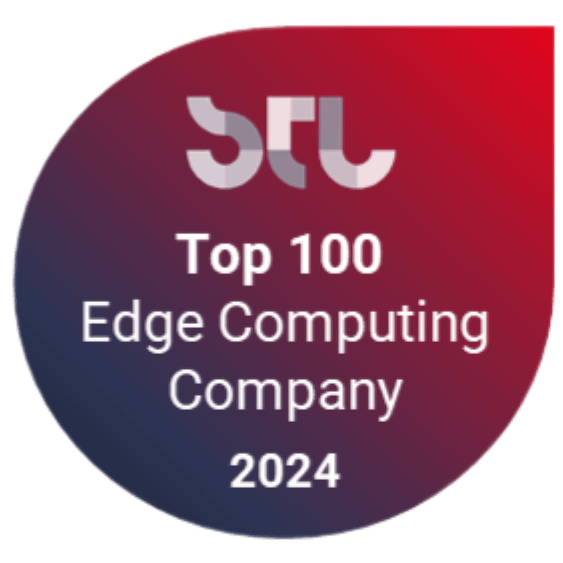Monitoring VS Observability
Coredge Marketing
June 23, 2023

When an application has a problem, it affects customers and, eventually, the business. Teams require a method for locating and swiftly fixing the source of issues. Monitoring and observability are useful in this situation.
Monitoring and observability are two methods for locating a problem’s origin. Monitoring just notifies you when something goes wrong; in contrast, observability can explain what is happening, why it is happening, and how to fix it. To gain a deeper understanding of each and the roles they play in contemporary software development, let’s take a closer look at each. You may now differentiate between observability and monitoring.
Observability:
Observability is the ability to determine the internal state of a complex system from its outputs. Without more testing or coding, a user can identify the cause of a performance issue in an observable system by looking at the data it produces.
The phrase is derived from control theory, an idea in engineering that describes the capacity to evaluate internal issues from the outside. For instance, automotive diagnostic systems provide mechanics with observability, enabling them to figure out why your car won’t start without having to disassemble it.
An observability solution in IT examines output data, makes a diagnosis of the system’s condition, and provides insights that can be used to solve the issue. A system that is observable allows DevOps teams to see the complete IT environment in context and with an awareness of interdependencies. As a result? Teams can use it to quickly identify problems and recognize them in the early stages.
Monitoring:
Monitoring is the process of gathering and evaluating aggregate data from IT systems based on a predefined set of metrics and logs to determine the health of a system. DevOps monitoring evaluates the condition of the program, for example, by establishing a rule that issues an alert when the app approaches 100% disk utilization, hence reducing the likelihood of downtime. The analysis of long-term patterns and alerting are where monitoring truly demonstrates its value. It demonstrates the app’s functionality as well as how it has been utilized over time.
Teams can examine the system’s performance and look for known issues with monitoring, although it has some restrictions. You must be aware of the metrics and logs to track for monitoring to function. Your team may overlook important production failures and other problems if a problem hasn’t been anticipated.
What’s the difference?
DevOps teams must keep track of systems if they want to determine the status of their apps. This entails gathering information from many IT sources and showing it so they can see when something is wrong. But without the aid of observability, it’s challenging to figure it out.
Combining observability with monitoring provides a comprehensive picture of the IT infrastructure. Monitoring serves as an early warning system, and observability aids in identifying the issue’s root cause and potential solutions. Even when an endpoint cannot be directly inspected, its performance must be monitored since it gives additional information that can be utilized to locate and resolve any systemic problems.
The boundary between observability and monitoring is frequently ambiguous for development teams. Observability vs. monitoring will be discussed in this article, as well as how they relate to one another.
DevOps teams appear to concur that monitoring and observability are separate operational kinds that focus on different issues. Observability and monitoring work together seamlessly. Observability tools can help with your search and monitoring tools can alert you when something goes wrong.
Combining monitoring and observability is beneficial since not all problems discovered by monitoring technologies require in-depth examination. For instance, despite being a part of a planned shutdown, your monitoring software may alert you that a server has gone offline. In that case, it is not necessary to collect and evaluate a wide range of data in order to understand what happened. Just log the alert and continue.
However, observability data is crucial for promptly resolving significant problems. The incident response process would take longer if you manually collected the same data that observability solutions automatically provide.
The availability of the data you need to comprehend a challenging scenario is always guaranteed by observability technologies. Numerous technologies also offer recommendations or automatically run analysis that can expedite the process by which teams go through large amounts of observability data and identify the root causes of problems.
We hope you liked reading this in-depth article about the fundamental distinctions between observability and monitoring and that it helped you determine where to draw the line between the two. Connect with us to learn more about our products and services.





